Paddleboarding for Pollen
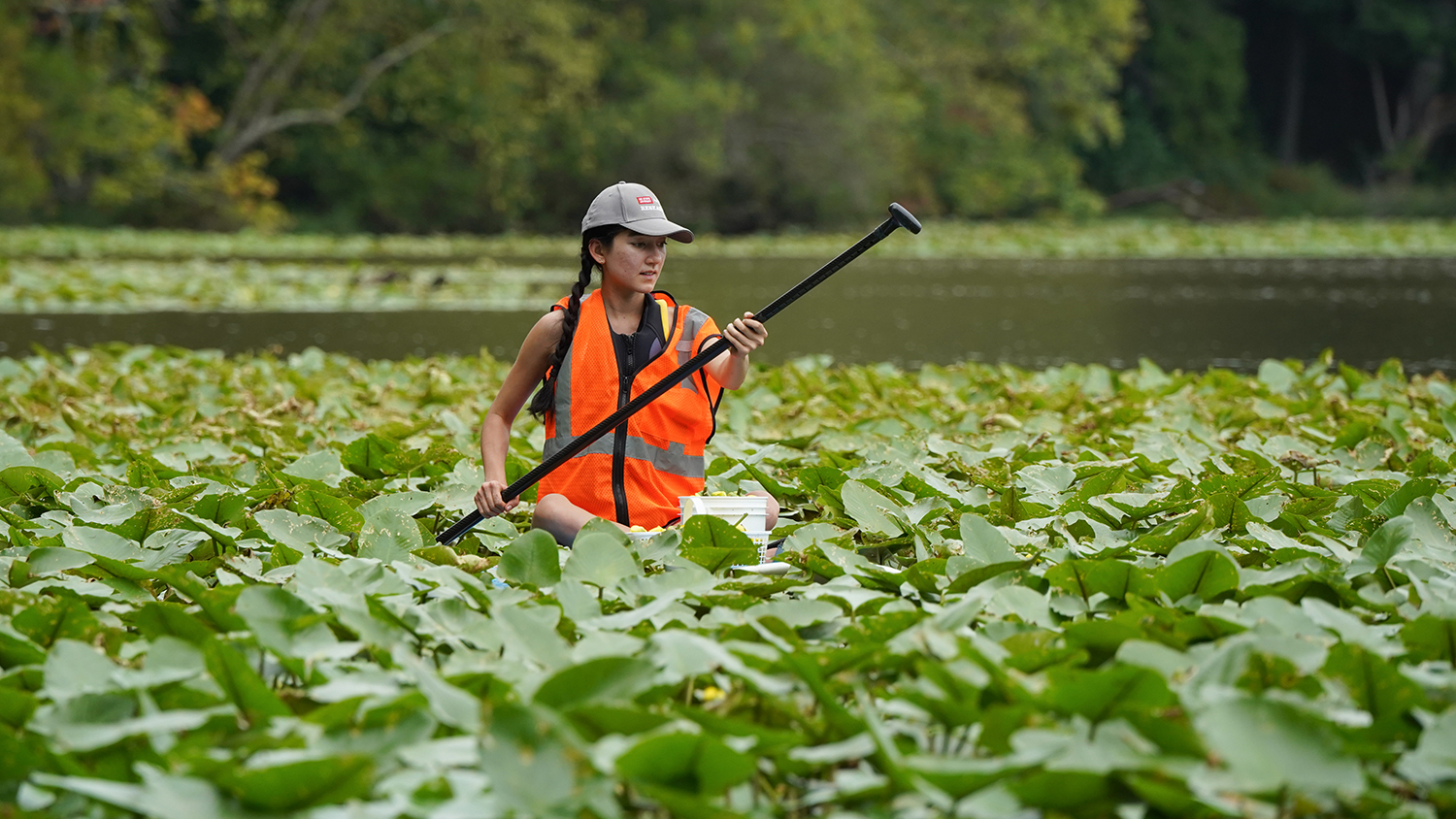
Can certain diets keep bees healthy? That’s what April Sharp, a graduate student in the Department of Applied Ecology at NC State University, aims to find out by studying Crithidia bombi, a fecal-orally transmitted parasite that may contribute to world-wide bee declines. Just as humans pick up germs from unwashed hands, bees become infected with Crithidia bombi by coming in contact with contaminated flowers. Sharp suspects that a bee’s diet, specifically pollen, may play an important role in reducing infection intensity.
“There are several really interesting examples of how floral foraging resources provide bees protection from parasites through secondary metabolites, which are chemicals that offer plant defenses,” explains Sharp. “An example of this is the heathlands of heather in the U.K. When bees eat the heather nectar it significantly reduces the chance of buff-tailed bumblebees (Bombus terrestris) being infected by Crithidia bombi.”
Professor Rebecca Irwin’s lab has previously found that bumble bees that consumed sunflower pollen exhibited reduced Crithidia bombi infection. While scientists do not fully understand the mechanisms behind this phenomenon, Sharp hypothesizes that the interaction between the bee’s gut and the morphology of the sunflower pollen’s spiky outer shell, or exine, is leading to a medicinal effect.
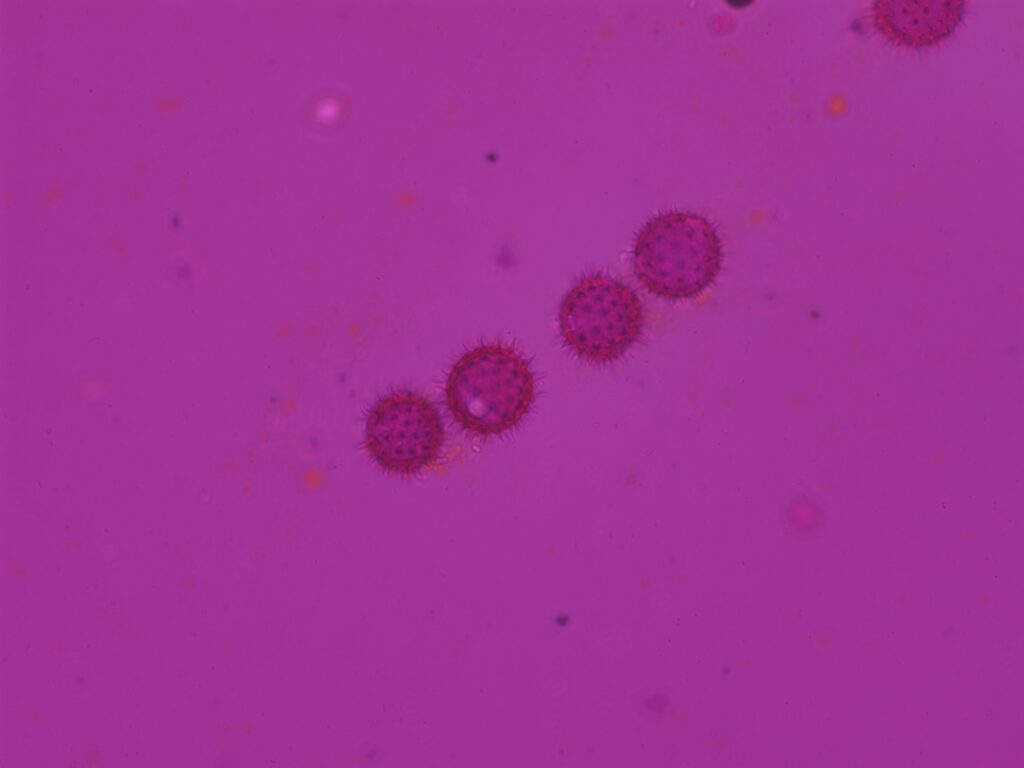
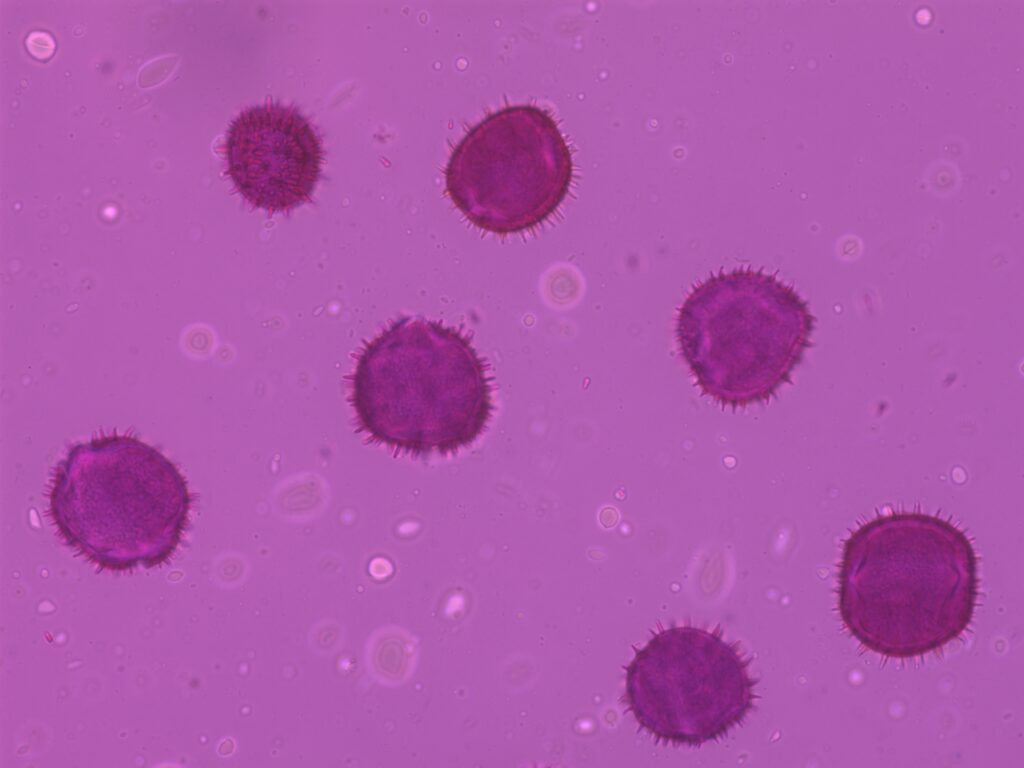
“Perhaps the spiky morphology is irritating or abrasing the epithelial lining of the bee’s gut,” theorizes Sharp. “This could elicit some kind of purging effect, or an increase of mucus production, which would give an extra protective layer to the gut, and will make it more difficult for parasites to adhere to the gut lining.
“Another theory could be that the spiky pollen acts as a bristled broom and scrapes all the Crithidia bombi off the bee’s gut. ”
Sharp decided to continue her research using Spatterdock water lily (Nuphar advena) pollen after finding that hibiscus, another flower with spiky-shaped pollen, also reduced bee gut infection intensity.
Water lilies, hibiscus and sunflowers are from different plant families but share the spiky morphological characteristic. By testing all three pollen diets, Sharp can learn if the reduced infection intensity has a mechanical component.
Sharp’s hypothesis led her to a new challenge — solving how to collect pollen from floating aquatic plants.
“Creativity plays a big role in my scientific process. I’ve had to create some of my own lab and field equipment in order to meet my specific research needs,” she says. “I’ve made custom bee cages out of K’NEX, the children’s toy. We always joke in the lab about how often we have to whip out a glue gun to fix or make something.”
Of the various ideas considered, Sharp decided to use a paddleboard to reach the water lilies.
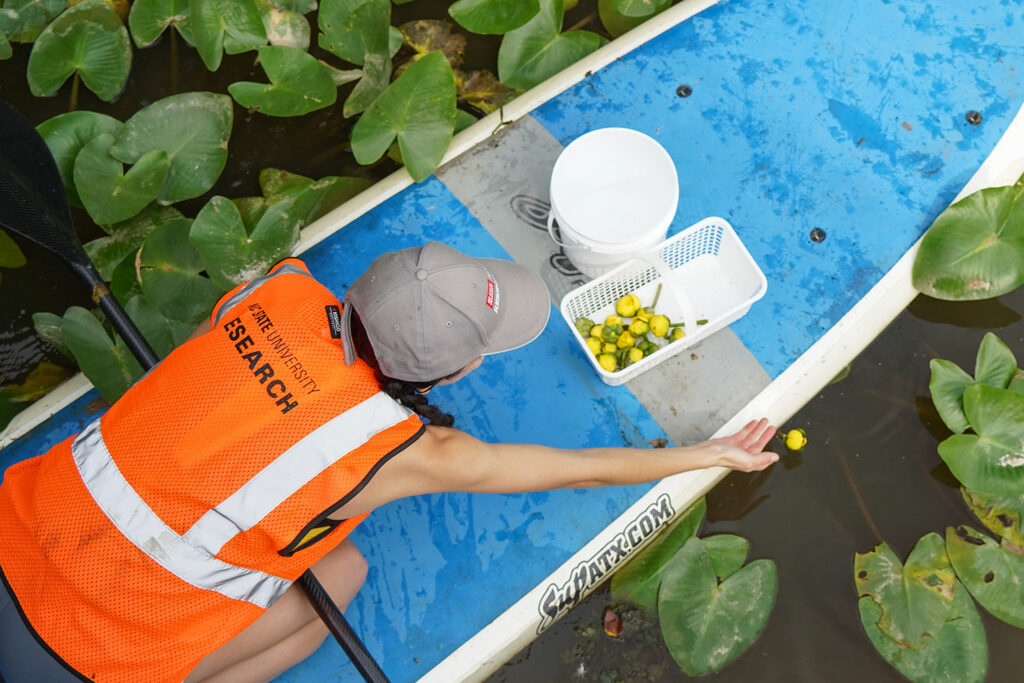
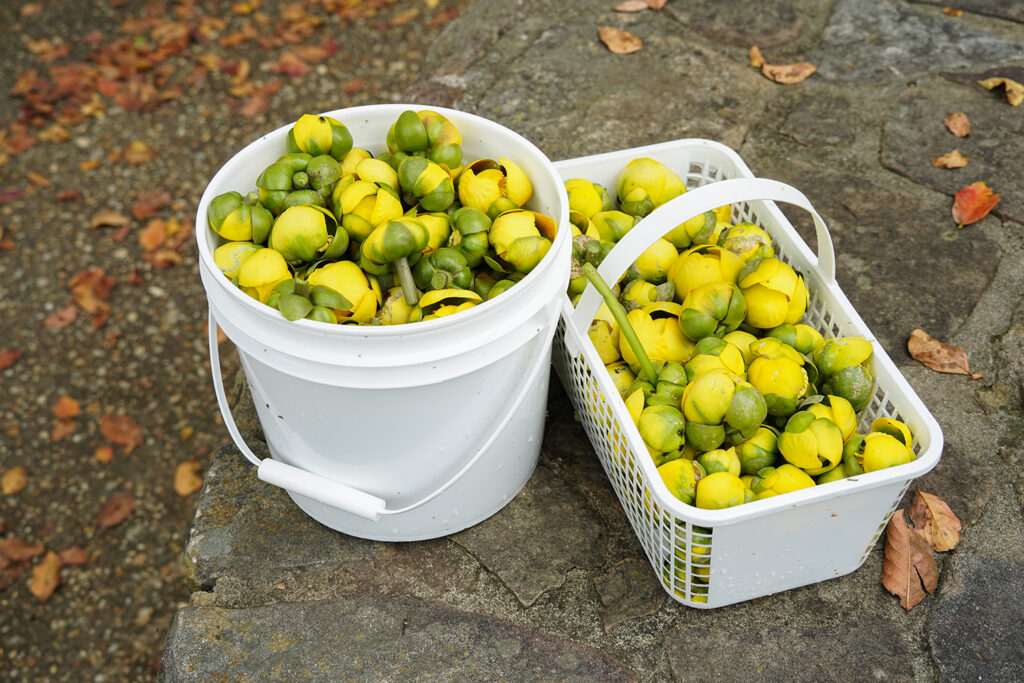
“My initial thought was to use chest waders, but the mud was simply too deep. It was my advisor Rebecca Irwin’s idea to go paddle boarding.”
One may easily confuse Sharp’s field work for recreation. She and Lab Manager Em Trentham take turns gliding through the water lily clusters and gathering flowers on Yates Millpond, five miles south of the NC State campus at the Historic Yates Mill County Park.
“Most of my research is in the lab, so it is an amazing opportunity to have so much fun outside and interact with nature while conducting my research,” Sharp says. “I learned that there are lots of bees that visit water lilies in the middle of the pond, as well as flies and wasps. I have had some very close encounters with wildlife. A fish jumped up on the board with me at one point.”
Each field day, Sharp and Trentham collect flowers until their baskets are full.
Back in the lab, undergraduate student and lab assistant Michely Coimbra wields an electric toothbrush that vibrates the pollen from the flower into a collection plate. The vibrations of the toothbrush simulate buzz pollination, a natural behavior exhibited by bees including bumble bees. By vibrating at a specific frequency, bees are able to dislodge pollen that is deep within specialized anthers and otherwise inaccessible. While water lily flowers do not require buzz pollination, their method ensures that pollen isn’t wasted on fingers or swabs.
Once the pollen is prepared, it will be fed to bumble bees in the lab to test the infection rate of Crithidia bombi. Sharp’s research will inform conservation practices aimed at promoting bee health and the ecosystems they support through pollination services.
“Crithidia bombi increases worker bumble bee mortality under stressful conditions,” explains Sharp. “It decreases their ability to learn, which is really important considering that they encounter a lot of different flower shapes when collecting pollen and nectar for their colonies. Crithidia bombi also negatively impacts the reproductive ability of the queen under stressful conditions.”
Crithidia bombi is known to infect other wild bee species besides bumble bees, making the parasite even more perilous.
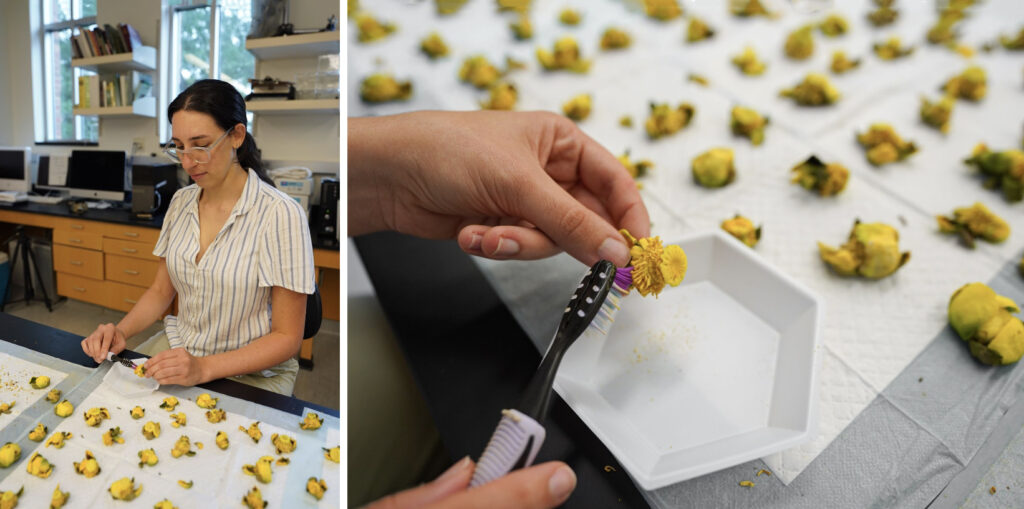
“Native bees are some of the most efficient pollinators. They are very important to natural ecosystems as well as agricultural systems. There are going to be really important consequences to our ways of life, and it’s important to study things like bee disease before this becomes very apparent to us in the future,” she shares.
Studies show that greater flower abundance and diversity supports larger, more diverse bee communities. Declining foraging habitat could lead to higher disease transfer, with Sharp comparing pollinator habitat to our grocery stores.
“If a neighborhood had several large grocery stores, people would have less close-contact with each other versus having only one small grocery store that we would all have to go to,” she says “Providing foraging and nesting habitat by planting native plants supports our native bees”.
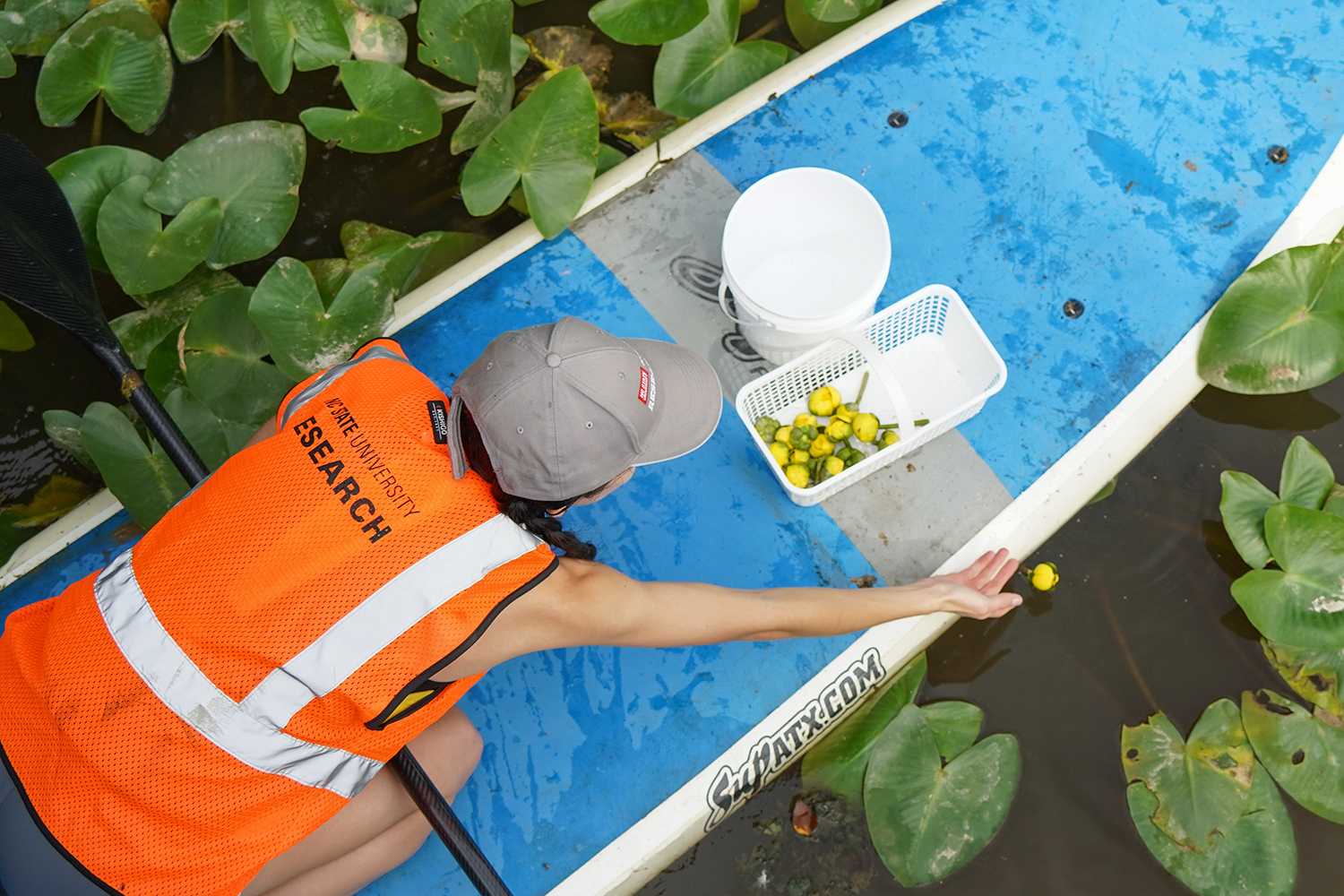
Discover Applied Ecology at NC State


